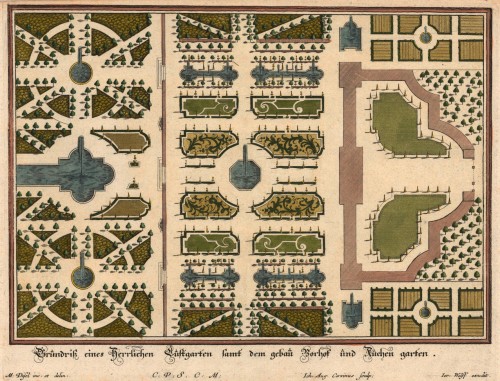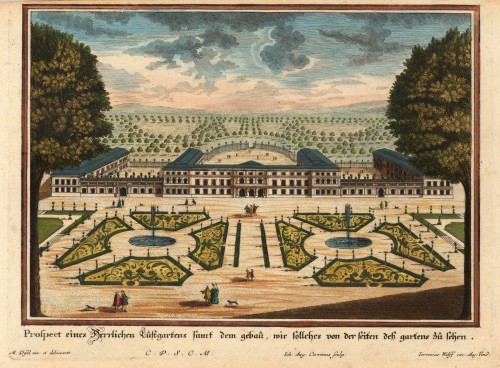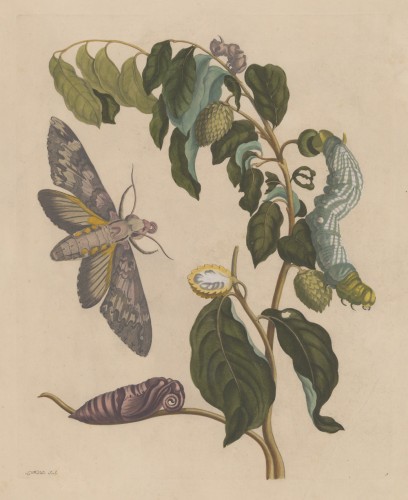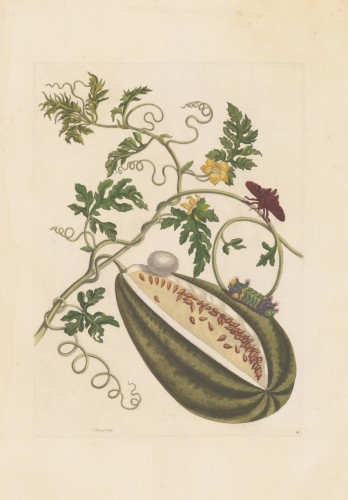Merian, Maria Sibylla
Plate No: 72 Amphibians
- Published: Amsterdam
- Published date: 1730
- Technique: Copper engraving / later hand color
- Type: Print
- Category: Insects of Surinam
- Issue date: 1704-30
- Size: 425 by 310mm (16¾ by 12¼ inches).
- Bibliography: Plate 72
- Stock number: 37613
- Condition: In very good to excellent condition.
Article description
Original antique copper engraving, finely hand colored, published in the famous series 'Over de Voortteeling en Wonderbaerlyke veranderingen der Surinaemsche Insecten' by Maria Sibylla Merian. A fine engraving from Maria Sibylla Merian's classic work. Maria Sibylla Merian, daughter of the German engraver and publisher Matthäus Merian, devoted herself to the study of European insects and their metamorphoses. As a result of the wealth of tropical varieties being brought back by the Dutch West Indies Company, she decided to visit the Dutch colony of Surinam herself to study and paint the insect life there. She sailed with her daughter Dorothea in June 1699 from Amsterdam and remained in Surinam until 1701. Also Maria Sibylla Merian's elder daughter Johanna went to Surinam to complete her mothers work. Most of the plates were engraved by P. Sluyter and J. Mulder, some by P. Stoopendal. Maria Sibylla Merian (2 April 1647 – 13 January 1717) was a German-born naturalist and scientific illustrator, a descendant of the Frankfurt branch of the Swiss Merian family, founders of one of Europe's largest publishing houses in the 17th century. Merian received her artistic training from her stepfather, Jacob Marrel, a student of the still life painter Georg Flegel. She remained in Frankfurt until 1670, relocating subsequently to Nuremberg, Wieuwerd (1685), where she stayed in a Labadist community till 1691, and Amsterdam. Merian published her first book of natural illustrations, titled Neues Blumenbuch, in 1675 at age 28. In 1699, following eight years of painting and studying, and on the encouragement of Cornelis van Aerssen van Sommelsdijck, the then-governor of the Dutch colony of Surinam, the city of Amsterdam awarded Merian a grant to travel to South America with her daughter Dorothea. Her trip, designed as a scientific expedition makes Merian perhaps the first person to "plan a journey rooted solely in science." After two years there, malaria forced her to return to Europe. She then proceeded to publish her major work, Metamorphosis insectorum Surinamensium (de), in 1705, for which she became famous. Because of her careful observations and documentation of the metamorphosis of the butterfly, she is considered by David Attenborough to be among the most significant contributors to the field of entomology. She was a leading entomologist of her time and she discovered many new facts about insect life through her studies. (Wikipedia)
Plate 72






